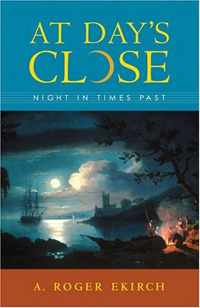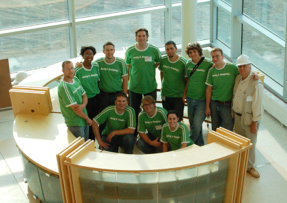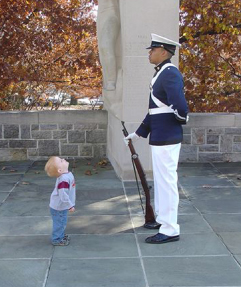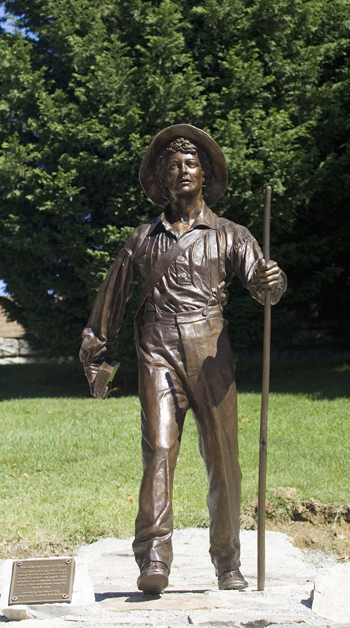|
 NEWS NEWS
| Get Tech news now on your cell phone or PDA -|- Want up-to-the minute news about Virginia Tech? Sign up for Virginia Tech Mobile, a new service that delivers the latest university news and information to cellular phones or personal digital assistants (PDAs). This new service gives users immediate access to the latest news and information on significant research, achievements, and projects and programs, as well as important campus notices, emergency- or weather-related announcements, current weather conditions in Blacksburg, and a comprehensive listing of campus events. To access Virginia Tech Mobile, simply enter http://mobile.vt.edu in the Web browser of your mobile device. |
|
|
Transferring to Tech a growing trend
Virginia Tech welcomed more transfer students this fall than ever before, with approximately half of them coming from Virginia's community colleges. Topping the university's previous high of 755 transfer students in 2005, the university enrolled 825 students transferring from other colleges and universities. This represents an upward trend, following an 8 percent increase in 2005 from the previous year. Tech's transfer applicant pool has numbered just over 2,700 each year since 2002. However, an increase each year in the strength of the applicants' academic credentials has resulted in more offers and more transfer students enrolling. In 2002, 619 transfer students enrolled (from a pool of 2,768 applicants), compared to 825 in 2006 (from a pool of 2,716 applicants). In addition to a long-standing equivalency table of Virginia Community College System (VCCS) and Virginia Tech courses, the university is writing formal guaranteed-admission agreements with VCCS. Currently, Virginia Tech has similar agreements in agriculture and life sciences and, with six community colleges, in engineering.
|

|
|
 |
|
Award-winning history -|- Professor of early American history Roger Ekirch received the 2006 Charles Smith Award for his book At Day's Close: Night in Times Past, which examines the history of nocturnal activity before the dawn of the Industrial Revolution and electrical lighting. The Smith Award is presented in even-numbered years by the European History Section of the Southern Historical Association for the best book on European history published during the past two years. Ekirch also was honored by the Library of Virginia with the 2006 Literary Award for the best work of nonfiction. Based on 20 years of detailed archival research, At Day's Close: Night in Times Past (W.W. Norton, 2005) is a compelling study of the darker side of human history.
|
|
|
|
| Pilot program addresses literacy needs of adolescents -|- Virginia Tech is one of six schools nationwide chosen for a new program that will address the literacy needs of adolescents. That there is an urgent need for such a program is evident: In 2005, the National Center for Education Statistics revealed that 71 percent of the nation's eighth graders are less than proficient in reading and two-thirds of all high school students read below grade level. Initiated by the Student Coalition for Action in Literacy Education, a program of the School of Education at the University of North Carolina at Chapel Hill, the STUDENT TO STUDENT program will train college student tutors on diverse campuses in a comprehensive tutoring model specifically addressing the needs of adolescent learners. STUDENT TO STUDENT promises to demonstrate improved school success and enhanced attitudes toward learning among the learners served. Virginia Tech’s community partner for the STUDENT TO STUDENT program is Tekoa Inc., a residential treatment facility serving youth 12-to-18 years old. Fifteen Virginia Tech students, most of whom are students in a course on juvenile delinquency, are signed up to begin tutoring in October. |
|
|
Urban Challenge team receives $1 million -|- "VictorTango," a team of Virginia Tech engineering and geography students entering the international Urban Challenge autonomous vehicle competition, is one of only 11 teams to receive $1 million in funding from the competition's sponsor, the Defense Advanced Research Projects Agency (DARPA). In addition, Ford Motor Co. has donated two Escape hybrid SUVs, and Caterpillar Inc. plans to fund a $100,000 grant for the team, which develop two autonomous vehicles capable of conducting simulated military supply missions in an urban setting. By August 2007, the vehicles must be capable of traveling a 60-mile course through traffic in less than six hours with no human intervention, including obeying traffic signals, merging into moving traffic, navigating traffic circles, negotiating intersections, and avoiding a variety of obstacles. Both vehicles will be outfitted with advanced laser rangefinders, radar, computer vision, and GPS (global positioning system) technology. "Odin," the Escape that will compete in the Urban Challenge, will be equipped with a powerful computer bank, allowing it to process the sensor information and make intelligent decisions. The team will use the other Escape for testing and data collection.
|
 |
|
|
 |
Every year, the corps of cadets celebrates Veteran's Day by holding two vigils, one at The Rock (located on the upper quad), which honors Virginia Tech alumni killed in World War I, and the other at the War Memorial. Here, Air Force Cadet Oliver Noel holds vigil, much to the admiration of 20-month-old Owen Hogeboom.
|
|
|
| Students from Virginia Tech's Washington-Alexandria Architecture Center in Old Town Alexandria, Va., teamed up to design, construct, and install the reception desk for the nearly completed presidential helicopter support building at Patuxent River Naval Air Station, Md. The conceptual design was created by Sebastian Gaiser, a master's student from Germany attending Virginia Tech as part of a Fulbright Scholarship. After the design was approved, a team of 10 students from architecture and landscape architecture prepared detailed drawings for construction and built the desk in the architecture center shop. The finished desk, which weighs more than 3,000 pounds, took about eight hours to install. |
|
|
|
| Google CEO makes million-dollar mark at Tech |
| by Lynn Nystrom
Although Eric E. Schmidt did not graduate from Virginia Tech, he recently announced a gift of $2 million to the College of Engineering. Schmidt's philanthropy is the result of a long-term relationship with Paul and Dot Torgersen. When Schmidt was a youngster, his family lived next to the Torgersens, and he used to mow the lawn of the former Tech president for spending money. Today, Schmidt is the chairman and chief executive officer of Google--and, according to some accounts, a possible candidate for Time Magazine's next Person of the Year.
Last spring, Torgersen, president of Virginia Tech from 1993 until 2000 and dean of its College of Engineering from 1970 to 1990, visited Schmidt in California, the home of Google. They discussed the possibility of Schmidt funding an endowed dean's chair that would enhance the already attractive leadership position of Virginia Tech's College of Engineering, and Torgersen suggested to his former neighbor that the gift be named the Eric Schmidt Dean's Chair in Engineering at Virginia Tech.
When Eric and his wife, Wendy, agreed to fund this proposal, they made a caveat unknown to Torgersen: to name the chair the Paul and Dorothea Torgersen Dean's Chair in Engineering. When the news was revealed, Torgersen said, "Dot and I have had some nice things happen to us over the past 52 years, but I do believe this is one of the nicest. The chair is a capstone both for the college and Dot and myself."
In an e-mail to Torgersen after the announcement, Schmidt wrote, "This seemed to be the least Wendy and I could do to honor your and Dot's commitment to a great university. Thanks for being so close to us for so long."
According to University Development, an endowed deanship is the single most prestigious position in a school or college. The Torgersen chair is the first of its kind at Virginia Tech.
|
 Lynn Nystrom is director of news and external relations in the College of Engineering. Lynn Nystrom is director of news and external relations in the College of Engineering. |
|
|

A new face on campus
When William Addison Caldwell arrived in Blacksburg on Oct. 1, 1872, after a long hike from Sinking Creek in Craig County, Va., he made history by becoming the first student to enroll in the new Virginia Agricultural and Mechanical College, forerunner of today's Virginia Tech. On Oct. 20, 2006--some 134 years to the month after Caldwell departed Craig County en route to Blacksburg--the Class of 1956 commemorated his historic role by dedicating the bronzed sculpture of Caldwell. Created by Larry Bechtel, Virginia Tech's recycling coordinator and a sculptor, the statue is located on a landscaped plot beside Brodie Hall, not far from where Caldwell's journey ended.
|
|
 RESEARCH RESEARCH
|
|
System X furthers Tech research
System X, Virginia Tech's groundbreaking 1100 node Apple/Infiniband cluster, isn't just for show. In November, the computer--which is available free of charge to faculty, students, and researchers across campus--passed the 15,000,000 CPU-hour mark. The more-than 50 projects for which researchers are using the system represent a wide cross-section of applications, including materials, fluids, biology, and chemistry. Research funding has also benefited from ready access to the resource, says Cal Ribbens, chair of the System X allocation committee and associate professor in the Department of Computer Science. A recent survey showed that current projects representing over $7 million in funding are making use of System X.
|
 |
|
| Researchers examine "foul taste" of chemotherapy -|- About two million cancer patients currently receiving certain drug therapies and chemotherapy will consume foods and beverages and find the taste to have a foul metallic flavor, according to a medical study. In general, more than 40 percent of hospitalized patients suffer from malnutrition due to taste and smell dysfunction. Andrea Dietrich, professor of civil and environmental engineering; Brenda Davy, professor of food science and technology; and YongWoo Lee, an assistant professor in the biomedical sciences and pathology department and a member of the Virginia Tech-Wake Forest University School of Biomedical Engineering and Sciences will apply a $200,000 grant from the Institute of Public Health and Water Research to examining the problems of foul-flavored water. The researchers hope to identify the cause of the metallic flavor in the mouth when drinking water contains metal ions, specifically iron and copper. Their research will also evaluate the use of antioxidants to prevent the metallic flavor production. "If we can discover the cause of the production of metallic flavor, then preventive methods can be taken accordingly," Dietrich says.
Tech provides a home for one-of-a-kind scientific equipment -|- In October, Virginia Tech unveiled several different pieces of one-of-a-kind scientific equipment that will attract university, government, and industry researchers from across North America who want to take advantage of the equipment's capabilities. The equipment, which will be housed in the university's Crystallography Laboratory, includes a Gemini Diffractometer and a PX Protein Scanner, both of which utilize the latest capabilities in X-ray and diffraction technology. Research using X-ray diffraction can lead to scientific breakthroughs like the ones currently underway at Virginia Tech, including discovering new drugs for treating cancer and Alzheimer's disease and finding cures for infectious diseases. Acquisition of the equipment was made possible through Virginia's Commonwealth Research Initiative and a five-year-old partnership with Oxford Diffraction Ltd., a global manufacturer and distributor of specialized diffraction equipment based in Oxford, England. University President Charles Steger says that the partnership "signifies Virginia Tech's position as one of the leading materials science research universities in the United States," adding that by being a demonstration site for such highly specialized research equipment, Tech will be able to enhance economic development and bring national attention to the research being conducted in the region.
|
|

